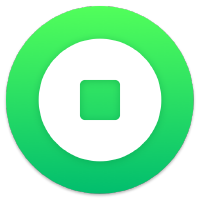
Here’s a quick overview of four of the newest crypto wallets with built-in DAPP browsers
If ethereum is to realize its promise as the “world computer” we’re going to need more advanced wallets. Mobile has arguably overtaken desktop as the dominant paradigm for interacting on the web but most decentral applications aren’t mobile ready. DAPPs promise to be our connection to voting, governance and the backbone of the web’s future. There are lots of mobile wallets available now but in the coming world, just sending tokens and crypto back and forth won’t be enough.
Today we’re taking a quick look at four bleeding-edge wallets which combine a DAPP browser with a mobile crypto wallet. Since development in this area moves very very fast we’re not going to make any kind of a ranking. Instead, we’ll list a few key features where each app shines.
Cipher Browser
The Cipher Browser has a solid DAPP browser which handles the login process for early DAPPs such as cryptokitties.co and leeroy.io as though one was using metamask. The Touch ID integration is good and approving transactions is pain-free. In addition, adding custom ERC20 tokens to the app is quick and straightforward if you are someone who knows their way around etherscan and who’s not afraid to find out how many digits a token contract allows.
Who’s it for? Old-school crypto nerds who want to keep it simple.
Toshi Browser
The open source Toshi browser is not only a wallet and a DAPP browser but also an encrypted chat platform. It uses a chatbot for the initial user journey which in our experience is an either a “you love it or you hate it” kind of thing. After that, one can access an app store like DAPP browser, a public chat client based on identities tied to ethereum addresses and a wallet supporting both fungible and non-fungible ethereum assets.
Toshi uses the Signal protocol by Whisper Systems for chat and the uPort identity protocol to store user profiles. All in all, it’s pretty forward thinking stuff if a bit cluttered at times. There’s also one weakness for industrial applications. Developers and other geeks may want to work on more than one network (Testnet, POA etc.) If that’s your use case, this one isn’t for you.
Who’s it for? Social crypto nerds who love trying out new stuff.
Status Browser
Status takes the social / chat idea from Toshi to the next level. In Status, one finds not only contacts in the chat interface but also DAPPs. As in Toshi, setup occurs via a dialogue with a chatbot. Again this isn’t for everyone, but it’s super for people who prefer onboarding by bot.
Status defines itself as a new kind of peer-to-peer encrypted messaging and payment system rather than a DAPP browser or a wallet. Yes, it does offer those things too, but everything in the Status app is centered around chat. The idea is that people do business and transact with other people, so their communication should enable that.
Right now, status is only available as an alpha release that you can test on the testnet using Testflight (iOS). There’s a very lively Discord community if you want to jump in and join the dialogue.
Who’s it for? Do you dream of native ethereum transactions while using whatsapp? Then this app is for you!
Trust Wallet
Like Cipher, Trust Wallet offers a more conventional experience. There’s a browser tab, a transactions tab, a tokens tab, and settings. Everything is pretty self-explanatory. The Web3 integration in the DAPP browser is great, so log in and transaction approval are simple. Also, the developer is working with decentral exchanges such as Kyber Network to make sure the DAPP creators are building stuff that is actually usable on mobile.
Also, this open source app is the only one on our list that may be appropriate for use in industrial applications. This is due to the fact that the Trust wallet allows the user to switch the network and that a proof-of-authority network connection is possible.
Who’s it for? Crypto industrialists, exchange integrators, open source forkers and friends of straightforward wallet tech.




